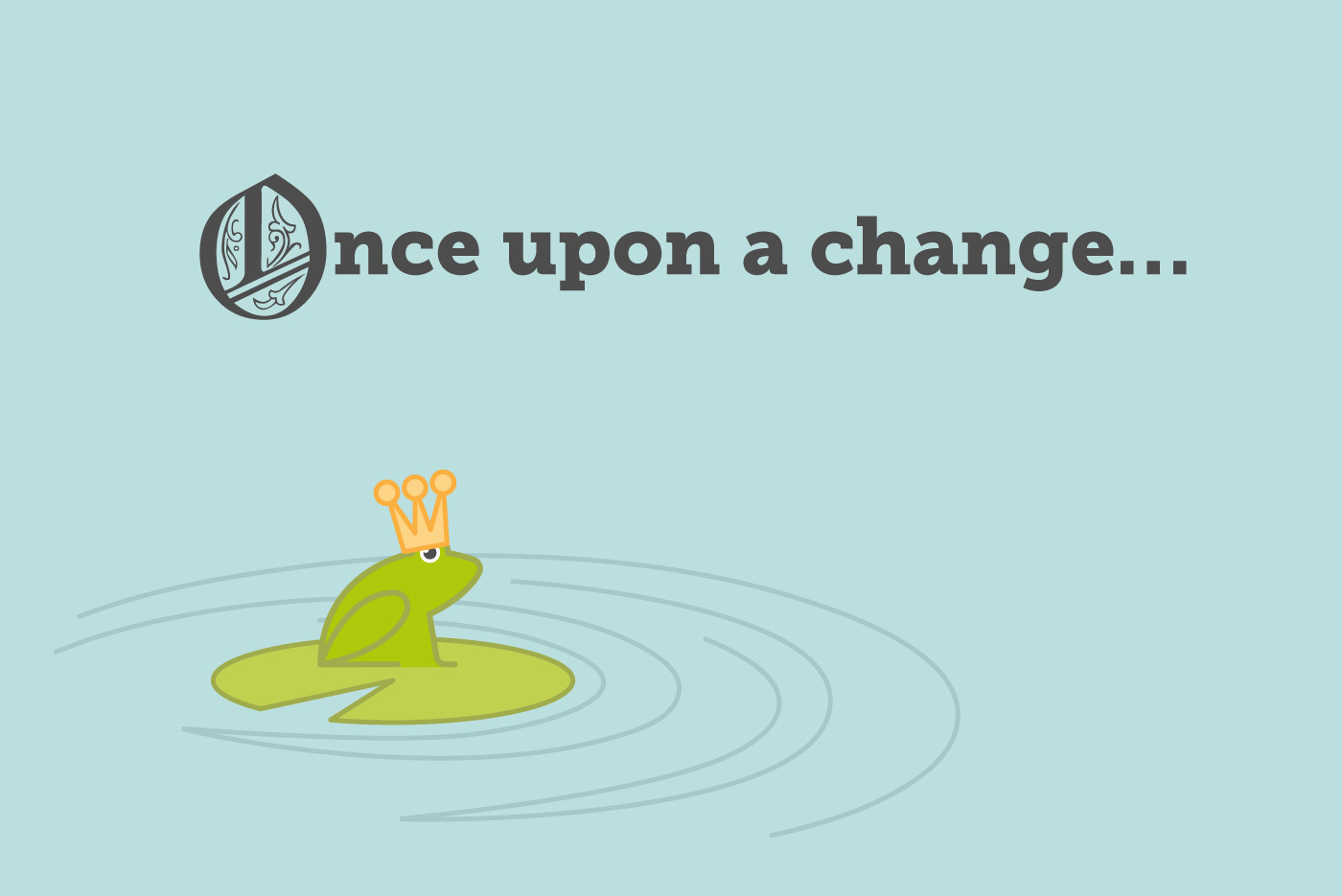
Internal comms and copywriter extraordinaire Ellie Buckingham joins the H&H blog to explore the power and potential of storytelling during times of organisational change – and imparts some helpful tips on engaging the bottom line in making change a success.
Once upon a time there was an internal communicator who knew change was coming, and only the love of a brave story could save them…
English novelist Phillip Pullman once said: “After nourishment, shelter and companionship, stories are the thing we need most in the world.”
We sit in cinemas crying with laughter, sob on our sofas watching Emmerdale, fall in love with characters in novels, engross ourselves in real-life documentaries, scroll through social media posts, back the underdog in a football match, and believe in Father Christmas.
We live our personal lives through an almost constant stream of stories, so our work lives should be no different.
Creating a narrative during a time of organisational change can help you show your employees how their individual contribution matters, and why they’re key to making change happen.
It’s about creating a story you all share, a script that defines the reason you all get out of bed in the morning; it’s the why to the what.
The castle on the hill
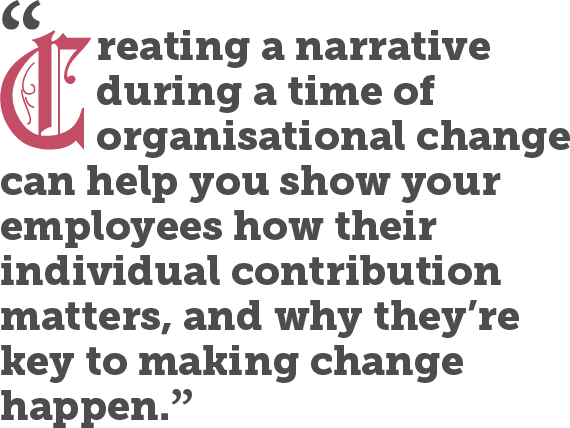

In 1957, psychologist Leon Festinger created his theory of cognitive dissonance; the mental state that occurs when people discover their beliefs are inconsistent with their actions. If you consider this theory when creating an organisational change communications strategy, storytelling can be the Hansel to your Gretel.
By helping employees to understand the purpose of the change/business – its story – you in turn help them to believe and invest in it. If they believe in it, they are more likely to want to change their behaviours and actions if they need to, in order to achieve it.
A poignant story about the power of storytelling is that of Ed Sheeran, arguably one of the best lyricists of our generation, who credits Eminem as helping him get rid of his stutter.
Sheeran’s Dad bought him Eminem’s album Marshall Mathers LP at the age of nine, without really understanding it’s content. Ed was so taken by Eminem’s incredible rapping and storytelling ability, that he learnt every lyric of the album “from back to front.” By the time he turned ten, his stutter had gone. Seventeen years later, he released a record with the man whose skill he held in such high esteem.
Closer to home, a business that has the power of storytelling nailed is Unilever.
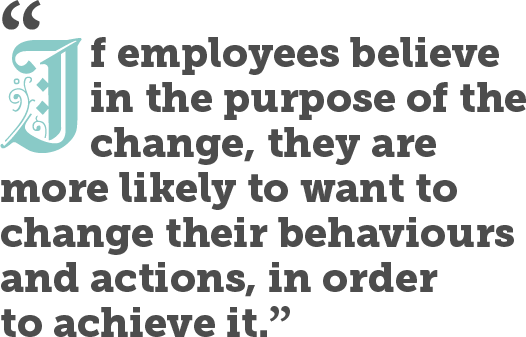

Marc Mathieu, Unilever’s then-Senior Vice President of Global Marketing, once said that “marketing used to be about creating a myth and selling, and now it’s about finding a truth and sharing.”
Take their brand Dove as an example. Their ‘Campaign for Real Beauty’ is now 14 years old, and goes to show that creating a great story isn’t a flash in the pan. Get it right, and it’s your story forever. Ok, so it has had its criticism – but what story hasn’t had at least one negative review?
Their story of real beauty, featuring real women instead of airbrushed models or celebrities, yielded amazing results, with a 700% upswing in the number of creams sold, and increased market share from 1% to 6%. That’s some serious storytelling power right there.
A change is a wish your heart makes
Our brains love stories as much as our hearts.
Socially, we connect through them – both with people we know and total strangers. They’re our way of sharing information and our values with each other.
If a story is personal or emotional it activates more of our brain, and we remember it better than we would a series of dry facts and figures. Add some sensory elements that remind us of particular smells or textures into the mix too, and our brains will do an even greater job of remembering it.
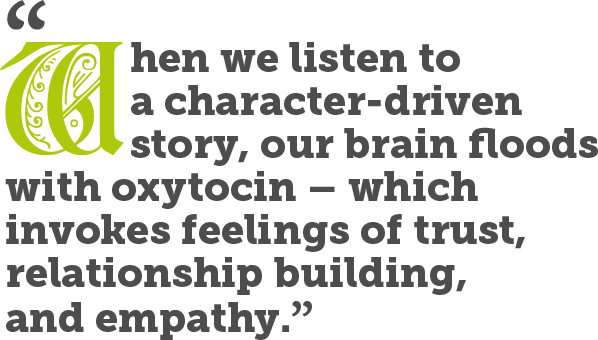

When we listen to a character-driven story, our brain floods with oxytocin. Often referred to as the ‘love chemical’, oxytocin invokes feelings of trust, relationship building, and empathy.
It’s an amazing little thing – it’s also found to inhibit the brain’s fear centre, so if you’re communicating something potentially distressing (like redundancy for example) storytelling could, in theory, get the oxytocin flowing and reduce the fear and trepidation your employees may be feeling.
An example that pulls all these elements together is Subaru’s 2014 ‘They Lived’ advert. It’s not easy viewing, but that’s one of the reasons why you’ll remember it. It’s an impactful narrative that will your flood your brain full of oxytocin. A powerful story, for sure.
Five tips for an organisational change happily ever after…
1. Know your audience.
Learn who they are, what they want, and what they feel. Only then can you target your story. Write it for them and about them.
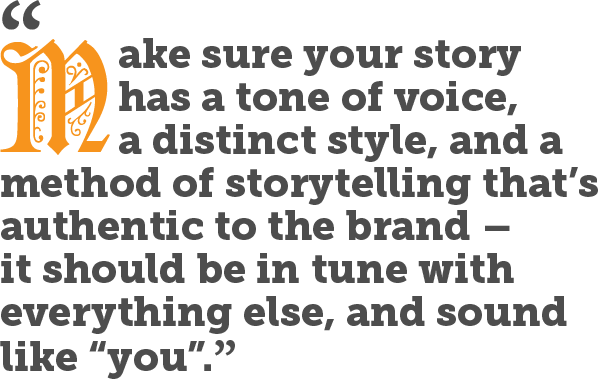

2. Remember that you’re not creating the brand story.
That’s way bigger than a single organisational change. Have perspective and create the story you need to tell. If the brand’s story already exists, brilliant; just add your own chapter.
3. Create a character, metaphorically speaking.
Make sure your story has a tone of voice, a distinct style, and a method of storytelling that’s authentic to the brand – it should be in tune with everything else, and sound like “you”.
4. The marketing ‘rule of seven’ means people have to see and engage with your content at least seven times before they remember it.
So this isn’t a ‘one and done’ approach. You don’t have to repeat the story chapter and verse; once you have the narrative, chop it up and share it through people stories and business stories, across different channels and media, with different spokespeople.
5. Focus on the why.
Sell the benefits. People connect more emotionally with a why than just a what. People aren’t interested in what your change programme can do, they’re interested in what it can do for them.
Meet the author

Ellie Buckingham
With a decade of corporate communications experience – and a lifetime of writing – under my belt, I provide businesses with copywriting and internal comms support, in everything from blogging to change management, social media to internal communications, and event management to proofreading. In 2012 I was named as one of the IOIC’s Top 30 Under 30 internal communicators.
Check out my blog, or connect with me on Twitter and LinkedIn!
Did you know that the way you manage and communicate change could be weakening your chance of making it a success?
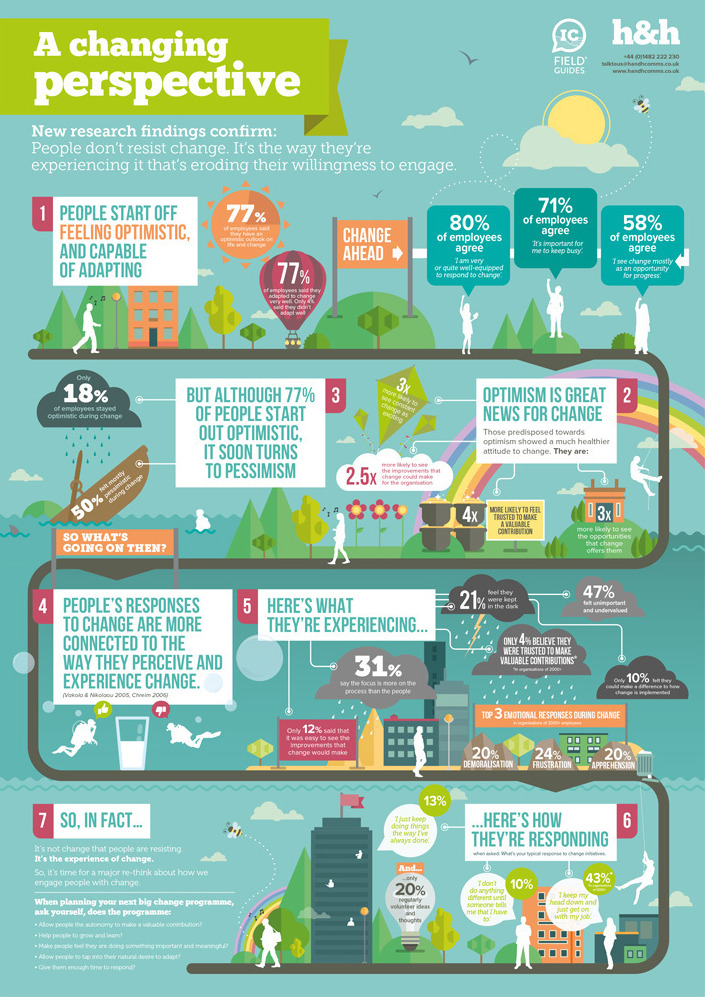

Our ‘Changing Perspectives of Change’ IC Field Guide will reveal where you may be going wrong. Packed to bursting with unique insights, stats and facts from recent research on what employees actually want from change, this infographic is an invaluable resource for whenever you’re communicating or leading a major organsiational transformation.
Download your FREE copy now to get your hands on these exclusive insights!







